Children In Cages
by J. Taylor Basker
When I was four years old, I was separated from my parents in Puerto Rico and sent on an Army airplane on a friend’s lap to the mainland. The situation in P.R. had become very difficult due to the war. There were food shortages, riots, and dangerous instability. My parents sent me off the island for my safety. My grandparents whom I did not remember met me in Miami. They were wonderful and became my surrogate parents. They took me on a train to Brooklyn and I fell in love with a small grey rubber mouse my Grandfather brought me. Since then I always loved mice and liked to drawn them. I left my biology major in college since we had to kill mice in the lab, perhaps remembering that toy mouse. Memories of this traumatic separation affected me profoundly throughout my life. It was winter when I arrived in NY, and the trauma of separation from my parents and tropical P.R. impacted my immune system; I developed pneumonia and nearly died. Nearly every winter through my childhood I came down with bronchitis or pneumonia. Besides medical problems, I also have had psychological issues regarding separation and this trauma experience through my adult life.
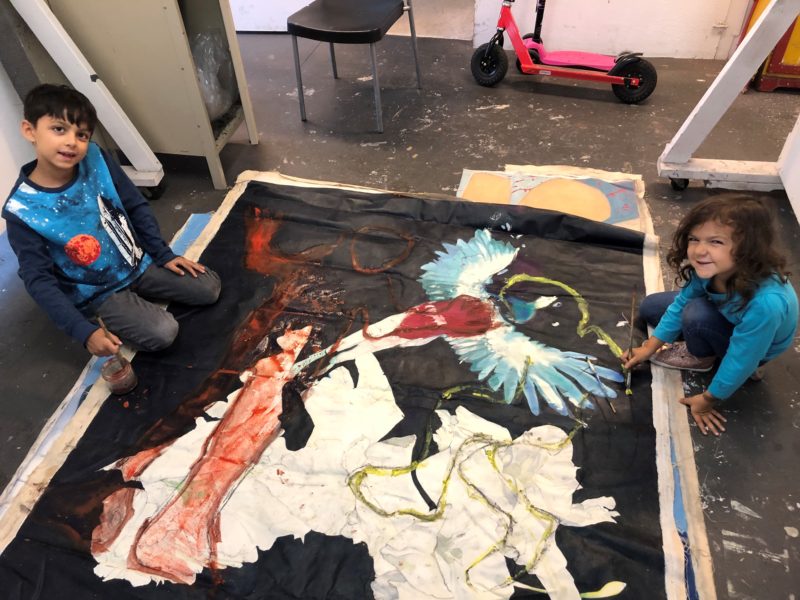 Yet what I experienced was minor in comparison to what the children who fled violence and sought refuge in America have had recently. Instead of a loving family to take them in, they have been placed in cages, separated from their parents. The Trump administration admitted they did not keep careful records and are unable to unite the children with their parents as ordered by the courts. Even the Nazis kept careful records; but our government found record keeping cumbersome, expensive and tedious. ICE treated them as livestock, corralling them into tents and structures convenient for control and dispersal.
Yet what I experienced was minor in comparison to what the children who fled violence and sought refuge in America have had recently. Instead of a loving family to take them in, they have been placed in cages, separated from their parents. The Trump administration admitted they did not keep careful records and are unable to unite the children with their parents as ordered by the courts. Even the Nazis kept careful records; but our government found record keeping cumbersome, expensive and tedious. ICE treated them as livestock, corralling them into tents and structures convenient for control and dispersal.
When I first heard about this, I was horrified. Both as a parent, grandparent and educator I am well aware of the delicate psyches of children, and the care and nurturing they need for development. Studies of children separated from parents in WW 2 and raised in institutions revealed the severe damage they suffered from lack of brain development and other serious psychological issues. And these children were in situations with adequate food, comfortable surroundings, and social and educational programs.
The children at the border are in cold cage-like units, sleeping on the floors, unable to touch or be touched by anyone. Brothers and sisters cannot hug each other. Many have reported sexual abuse. Many spend their time crying for their mother or father. The situation is a violation of international law and basic morality. Like most Americans, I feel helpless and voiceless. In my outrage I signed petitions, went to demonstrations, wrote letters. However as an artist, my art became my protest statement.
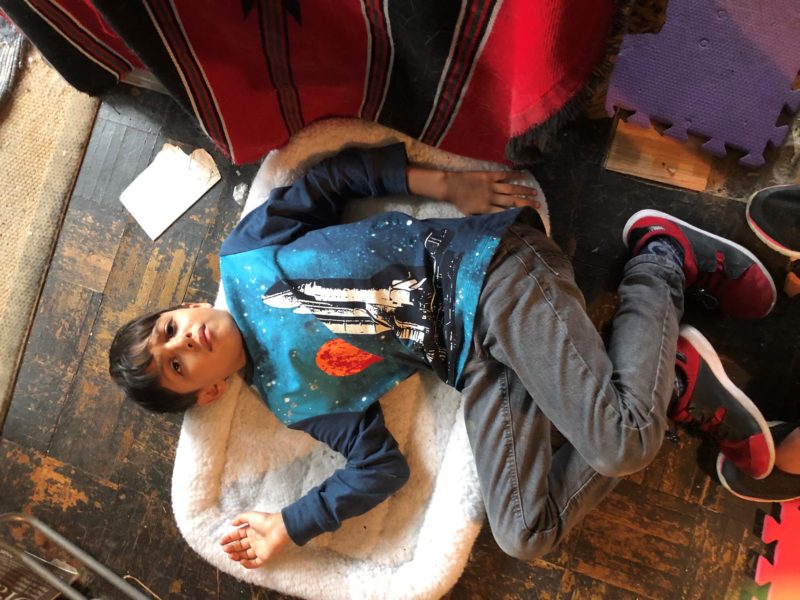 I invited my grandchildren, Nadal age 7 and Aria age 4 to my small painting studio that I had briefly in Westbeth Artist Housing in NYC, where I live. I talked to them about the children in cages, that they already had heard about and were very concerned. I placed a large canvas that that I had gotten from my neighbor – the well-known artist Anne Tabachnik, where we both had played with large abstract forms and wings. I asked my grandkids to lie on the canvas and take poses expressing how they would feel if they were separated from their parents. We took turns drawing the outlines of their bodies then we began painting them.
I invited my grandchildren, Nadal age 7 and Aria age 4 to my small painting studio that I had briefly in Westbeth Artist Housing in NYC, where I live. I talked to them about the children in cages, that they already had heard about and were very concerned. I placed a large canvas that that I had gotten from my neighbor – the well-known artist Anne Tabachnik, where we both had played with large abstract forms and wings. I asked my grandkids to lie on the canvas and take poses expressing how they would feel if they were separated from their parents. We took turns drawing the outlines of their bodies then we began painting them.
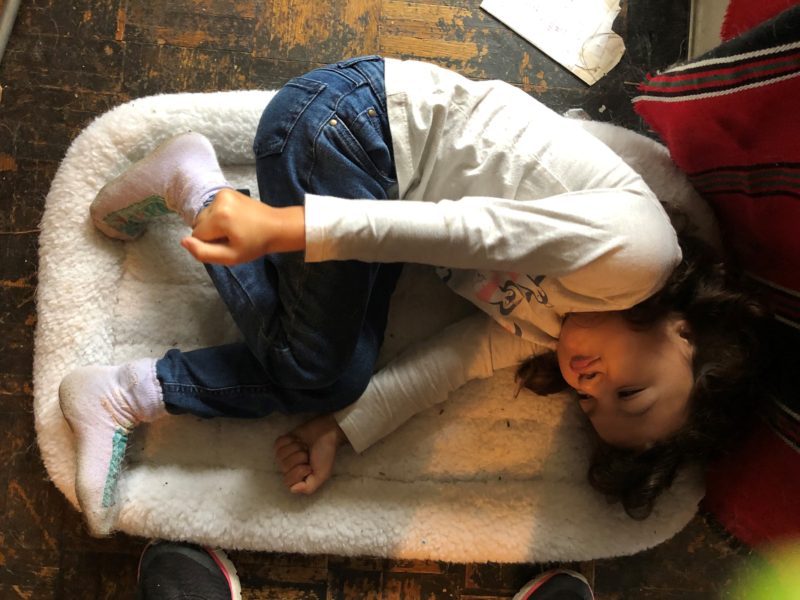 Unfortunately my time was up in the Westbeth painting studio, and I rolled up the painting and brought it to my apartment. I planned to do an installation series and display the paintings in actual metal cages, possibly with the sounds of the children crying which have been recorded. But I didn’t have enough room in my house.
Unfortunately my time was up in the Westbeth painting studio, and I rolled up the painting and brought it to my apartment. I planned to do an installation series and display the paintings in actual metal cages, possibly with the sounds of the children crying which have been recorded. But I didn’t have enough room in my house.
As the situation at the border got worse, I became despondent and stopped the project.. I had hoped that the huge wave of moral outrage could stop this criminal abuse of children, yet as time went on it became apparent that it would not stop, and many were profiting from the building of internment camps and incarcerations.
Can making art make change? Is there any power in images to correct injustices and indignities? While we artists may experience self-doubt about our ability to be an effective voice of conscience, tyrants through history have suppressed and killed artists, whom they feared. Their art was a threat. Any vision that did not conform to the accepted conventions and suggested an alternate paradigm or criticized entrenched power structures were suspect and purged. They understood the power of art.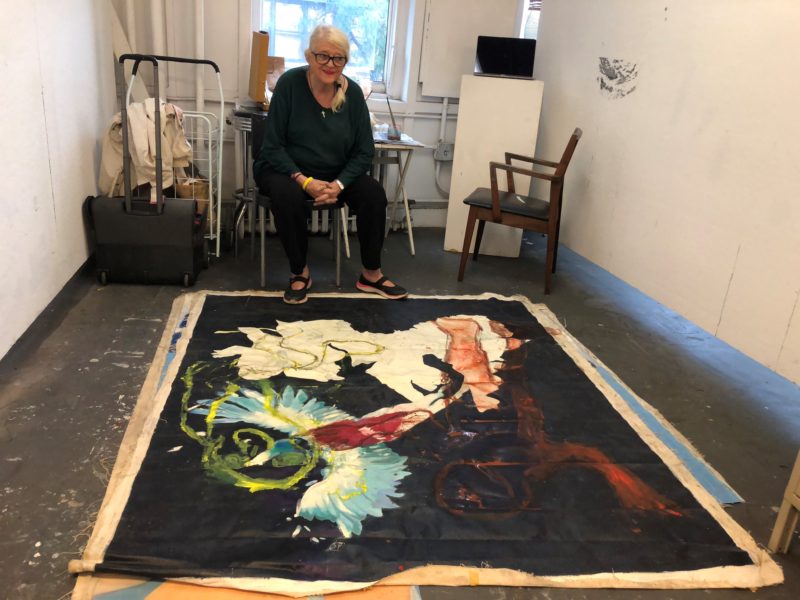
During this critical period in American history it is more important than ever for artists to produce art that responds to the crisis in humanity and the environment that we are witnessing. And perhaps these visions can effect change and healing.
I plan to return to my art, and am curating an exhibit of artwork addressing the issues at the border and abuse of immigrants and asylum seekers. Revelation Gallery in St. John in the Village on Waverly Place off 7th Avenue will be a venue for this event – date to be determined. If anyone is interested in participating, please contact me.
About the author:
Dr. Jacqueline Casale Taylor Basker is visiting professor at the German-Jordan University, Amman, Jordan (Islamic Architecture, Heritage & Conservation), New York Institute of Technology, Old Westbury. She is President, ArtsPR-International, and Former Chair, Fine Arts/Computer Graphics Dept., New York Institute of Technology, Amman, Jordan. She has homes in New York City, New York, USA, and Amman, Jordan.
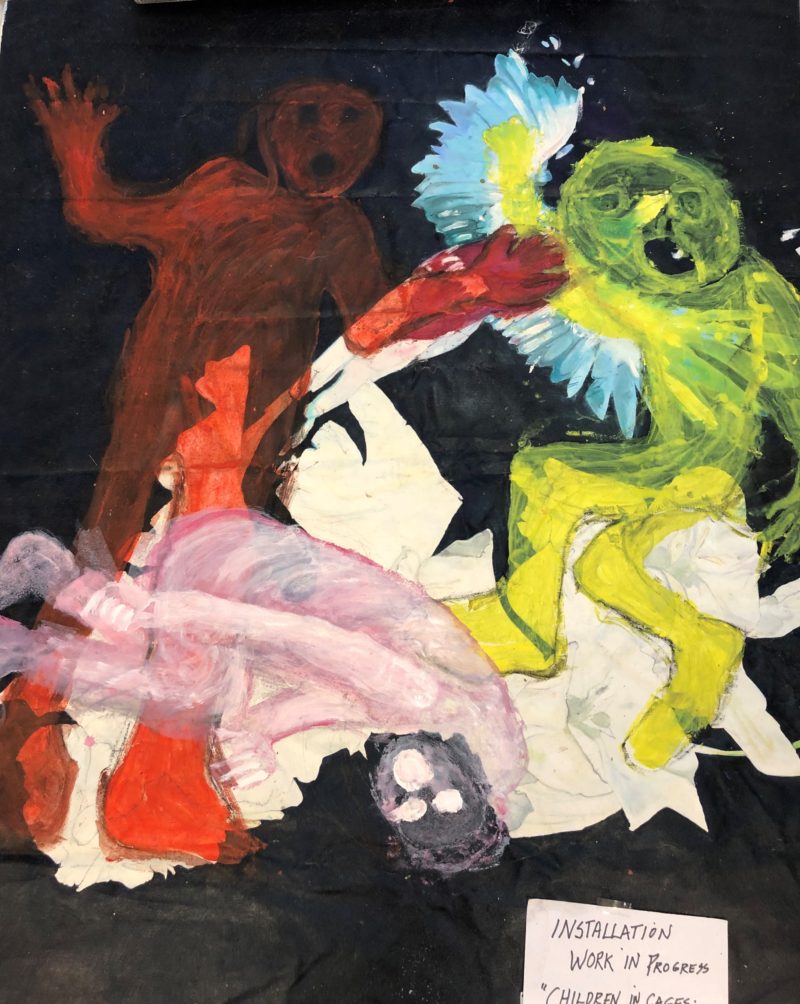
Recent Comments